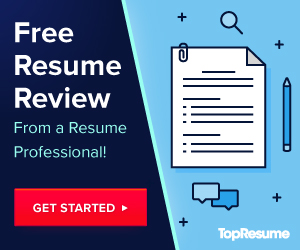Over the past few decades, the employment landscape has changed dramatically. Few employees now spend their entire career with a company, advancing within the same organization. Instead, they change employers frequently and are constantly searching for a better position, often with a competitor.
In fact, today’s average employee stays at each of his or her jobs for just 4.4 years. And this environment is a breeding ground for boomerang candidates.
What exactly are boomerang candidates? They’re employees who leave one company for another job, only to eventually return to their former workplace. And boomerang candidates offer both benefits and challenges to employers considering re-hiring them. Below, we discuss some of the reasons you should consider boomerang employees, as well as tips for interviewing, hiring, and reintegrating them into your company.
The Benefits Of Boomerang Candidates
Boomerang candidates bring several unique benefits to the table. In fact, many recruiters actually prefer re-hiring old employees to finding and training new employees.
They’re a known entity
First, boomerang candidates have a well-known track record with your company. You know what to expect from them. Their former managers and co-workers are familiar with their strengths and weaknesses, and you already know that they’re a good cultural fit. And you have built-in, reliable references – fellow employees who will be able to speak to their work ethic and their past performance.
They’re easier to train
Second, boomerang candidates cost less and are easier to train. They’re already familiar with your company’s operations, as well as any unique processes or programs. Much of the basic onboarding and training can be skipped, so they can start contributing and producing sooner.
Their turnover rate is lower
Third, the employee turnover rate is lower among boomerang candidates than it is for typical new hires. Just as your company knows what to expect from them, they know what to expect from you and your company. They’re already comfortable with the culture, and have succeeded in it previously. More significantly? Knowing what else is out there, they chose to come back.
They provide a competitive advantage
In some cases, boomerang candidates may provide one more unique benefit: a competitive advantage. They may have built relationships with customers who will follow them to your company, or they may have gained significant insights from their time working at another company in the industry. As long as they’re not violating any type of legal contract, these insights could provide a valuable competitive boost.
Pre-Hire Precautions
While there are a number of benefits to hiring boomerang candidates, there are also precautions that companies should take during the interview and hiring process. The biggest concern? What happened between the time the employee left your company and the time he or she reapplied.
The exit interview
Successful boomerang hires begin with an interview– but not the kind you’re thinking. Sure, the return interview is important. But so is the exit interview. Conducting an in-depth exit interview with every employee who leaves your company gives them an opportunity to share why they’re leaving – an important think to know, should they ever want to return. It also lets both parties – your company and the employee – lay out how they would like to approach their future relationship.
Staying connected
You should also try to stay in touch with employees who may want to return later, or who you think would be good candidates for rehiring down the line. The most successful boomerang hires are the ones who stay connected with their former employers, whether it’s through the HR or recruiting departments or through friends or colleagues still working there. A close relationship will also help former employees reintegrate themselves more quickly into your company’s culture.
Cover all your bases
Finally, before making a decision, you need to consider two things: why they left in the first place, and why they want to return. It’s fine if they left because they simply wanted a different position or different experience. But if it was because of an underlying issue like a managerial problem or cultural conflict, that could present a problem. Also be sure to reach out to the employee’s most recent managers and references to get their read on the employee. A lot can change in a short period of time, so it’s important to make sure the employee you’re considering rehiring is the same one you were sad to see leave.
Reintegration Into The Workplace
Boomerang candidates rarely come back to the same situation they left. Maybe they’re coming back to a new position, or company policies have changed. It’s likely they’ll be working under – or over – a new team of people.
In order to successfully integrate a former employee into a new company environment, expectations need to be clearly set. The best way to do this? Have well-written job descriptions for the boomerang candidate, as well everyone they work with – and make sure that everyone is on the same page prior to their start date.
As long as there are clear roles in place and clear expectations set, your company should be able to benefit from many of the advantages of boomerang candidates. Be sure to maintain a relationship with your best former employees, and do your research when you’re considering rehiring them. Hiring boomerang candidates isn’t easy, but it can have big payoffs (and savings) in the end.
Have you ever hired a boomerang candidate? What was your experience?
Photo Credit: Shutterstock











